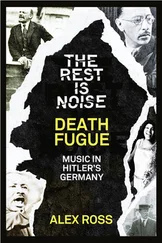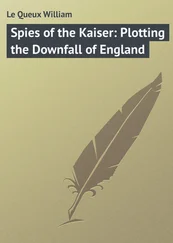Moltke, Count Helmuth James von (1907-45)
Lawyer. The great Prussian field marshal of the same name was his great-granduncle. Thanks to family connections and education, had many ties in England. Became a lawyer in Berlin in 1934. Practiced law in Britain from 1935 to 1938 and planned to take over a law office in London. Undertook a peace mission to London in 1939. Owned the Kreisau estate in Silesia. In September 1939 joined the OKW Military Intelligence branch, where he served as a specialist in international law and law of war. Sought to obtain humane treatment of prisoners of war and compliance with international law. Began writing papers in 1939 arguing for a political change of direction in Germany. Systematically broadened his contacts in the Kreisau Circle to include church leaders and Social Democrats. Communicated with the Allies in 1943. Warned members of the Solf Circle that they were being spied on by the Gestapo and was arrested himself on January 19, 1944. The police investigations following July 20, 1944, uncovered his ties to the innermost circle of conspirators. Condemned to death by the People’s Court on January 11, 1945, and executed in Plötzensee prison on January 23.
Oberg, Carl-Albrecht (1897-1965)
SS Obergruppenführer. Senior SS and police commander in occupied France from 1942 to 1945. His appointment brought a sea change in relations between the military administration and the German police, who were made responsible for the security of the troops at their bases. Worked closely with French militiamen and collaborators. Took measures against Jews and the French resistance. Arrested for a short time on July 20, 1944, by army conspirators in Paris. Condemned to death in Germany in 1946, then extradited to France, where in 1954 he was once again sentenced to death. Sentence commuted to life imprisonment in 1958, but Oberg finally pardoned in 1965.
Olbricht, Friedrich (1888-1944)
Career officer. Division commander from 1938 to 1940. Lieutenant general in the infantry. Chief of the OKW General Army Office in Berlin from 1940 to 1944. After 1943 also chief of the reserve section within the OKW. With the groups led by Beck, Goerdeler, and Tresckow developed the Valkyrie plans for seizing control of government. In the fall of 1943 asked to have Stauffenberg appointed chief of staff in his office, but Stauffenberg was transferred in June 1944 to the staff of the commander in chief of the reserve army, Friedrich Fromm. It was Olbricht who gave the signal to launch Operation Valkyrie in Berlin after the assassination attempt of July 20. Executed by firing squad that night in the courtyard of army headquarters on Bendlerstrasse.
Oster, Hans (1888-1945)
Career officer, eventually brigadier general. Led the resistance movement within Military Intelligence. In 1935 joined the counterintelligence division of the Ministry of Defense as a reserve officer with the rank of lieutenant colonel. Played a leading role in the September conspiracy of 1938. In 1940 informed the Dutch military attaché about the impending German invasion of Holland. Became an active officer in 1941. Head of the central division of the OKW Military Intelligence Office. Dismissed on April 16, 1943, on charges of violating currency laws. Supposed to become president of the Reich military court after the coup. Arrested on July 21, 1944. Tried by a kangaroo court and hanged in the Flossenbürg concentration camp on April 9, 1945.
Reichenau, Walter von (1884-1942)
Head of the Bureau of Ministers (later Wehrmacht Office) in the Ministry of Defense and, as such, chief of staff and personal adviser to Blomberg. Saw National Socialism as a mass movement that he could exploit to advance the interests of the army and enhance the glory and prestige of Germany. Played a key role in integrating the Reichswehr into the Nazi state. After the invasion of Poland in 1939, became critical of Hitler’s plans for a hasty offensive in the West. Appointed field marshal in 1940 after the victory over France and finally commander in chief of Army Group South. Covered up the SS bloodbaths in the East. Claimed that German soldiers were imbued with a “relentless racial idea” that was more important than traditional concepts of military honor. Died of a heart attack after crash landing in an airplane.
Reichwein, Adolf (1898-1944)
Educator. Influenced by both socialism and the youth movement. Appointed professor of history and civics in Halle in 1930. Transferred by the Nazis to a rural school in April 1933. Later an educator in the State Museum for German Folklore in Berlin. Maintained contacts with the opposition and was a member of the Kreisau Circle after 1940. His office on Unter den Linden became a meeting place for the opposition. Despite the warnings of fellow conspirators, he and Julius Leber contacted a Communist resistance group that had been infiltrated by the Gestapo. Arrested in early July 1944. Condemned to death by the People’s Court on October 20 and executed the same day.
Rommel, Erwin (1891-1944)
Career officer. At first sympathized with the Nazis. Master of tank warfare tactics and a legendary troop commander. From 1941 to 1943 commander of the Africa Corps. Appointed field marshal in 1942. Commander in chief of Army Group B in Italy and northern France in 1944. Sympathized with the conspiracy against Hitler but did not participate. Forced by Hitler to commit suicide on October 14, 1944, after his plans to “open” the western front became known. Would otherwise have been charged with treason before the People’s Court.
Schacht, Hjalmar (1877-1970)
Economist. Cofounder of the German Democratic Party. Played a key role in stabilizing the German mark in 1923. Joined the rightist Harzburg Front in 1931. Introduced Hitler to the circles of high finance. President of the Reichsbank from 1923 to 1930 and from 1933 to 1939. Minister of economics from 1934 to 1937. Came into conflict with the Nazi leadership because he wanted to resist devaluation and inflation. Continued as minister without portfolio until 1944. Horrified by the Fritsch affair and Hitler’s evident intention to go to war, began to distance himself from the regime and placed himself at the disposal of the conspirators in September 1938. Considered by resistance to be somewhat unreliable. Arrested alter July 20, 1944, but nothing could be proved against him. Acquitted at the Nuremberg trials. Became a banker and financial adviser after the war.
Schlabrendorff, Fabian von (1907-80)
Lawyer and first lieutenant in the reserves. Served as Henning von Tresckow’s adjutant. In the military resistance, acted as the regular contact between Army Group Center and Beck, Goerdeler, Oster, and Olbricht. Arrested after July 20, 1944. Held in the Flossenbürg and Dachau concentration camps. His trial was delayed when Roland Freisler, president of the People’s Court, was killed. Eventually acquitted in March 1945, and released following the war. A judge of the Constitutional Court of the Federal Republic of Germany from 1967 to 1975.
Schulenburg, Count Fritz-Dietlof von der (1902-44)
Lawyer specializing in administrative law. Joined the Nazi Party in 1932. Became deputy prefect of police in Berlin in 1937 and regional commissioner of Upper and Lower Silesia in 1939. Already considered, however, to lie “politically unreliable” and was expelled from the Nazi Party in 1940. First lieutenant in the reserves. Contacts with the Kreisau Circle. Held in high esteem by all, thanks to his dynamic personality. Perhaps the most valuable middleman in the resistance, maintaining close contacts with Stauffenberg as well as with Goerdeler, Leber, Popitz, and Moltke. Arrested after July 20, 1944. Executed in Plötzensee prison on August 10.
Читать дальше
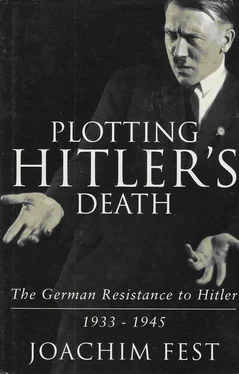
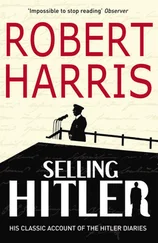
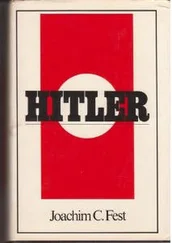
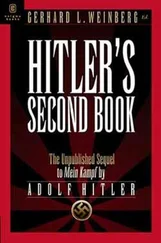
![Traudl Junge - Hitler's Last Secretary - A Firsthand Account of Life with Hitler [aka Until the Final Hour]](/books/416681/traudl-junge-hitler-s-last-secretary-a-firsthand-thumb.webp)





